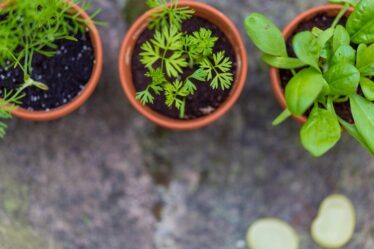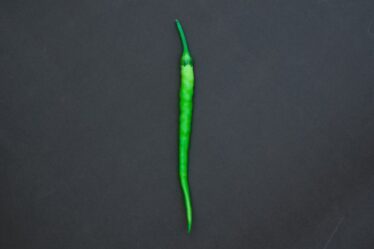
Dried hot peppers have a long and rich history in culinary traditions around the world. Dating back thousands of years, they were first cultivated in Central and South America and were later introduced to other parts of the world through trade routes. Today, dried hot peppers are a staple ingredient in many cuisines, adding heat, flavor, and depth to a wide range of dishes.
One of the reasons why dried hot peppers are so versatile is because they come in a variety of heat levels and flavors. From mild and smoky to fiery and intense, there is a dried hot pepper to suit every palate. They can be used in both savory and sweet dishes, adding a unique kick that elevates the overall flavor profile.
Key Takeaways
- Dried hot peppers are a versatile ingredient that can add flavor and heat to a variety of dishes.
- They offer numerous health benefits, including pain relief, improved digestion, and boosted metabolism.
- Different types of dried hot peppers have unique flavor profiles, ranging from smoky to fruity to floral.
- To store and use dried hot peppers, keep them in a cool, dry place and grind or soak them before adding to recipes.
- Dried hot peppers can be used in a variety of dishes, from soups and stews to marinades and rubs, and can even be added to cocktails and international cuisine.
The Health Benefits of Dried Hot Peppers
In addition to their culinary uses, dried hot peppers also offer a range of health benefits. They are packed with vitamins and minerals, including vitamin C, vitamin A, potassium, and iron. They are also a good source of antioxidants, which help protect the body against free radicals and reduce inflammation.
Dried hot peppers have been found to have anti-inflammatory properties, which can help reduce pain and swelling in the body. They also contain capsaicin, a compound that has been shown to have pain-relieving effects. Capsaicin is often used topically in creams and ointments to relieve muscle and joint pain.
Types of Dried Hot Peppers and Their Flavor Profiles
There are many different types of dried hot peppers, each with its own unique flavor profile and heat level. Some popular varieties include:
– Ancho: Ancho peppers are dried poblano peppers and have a mild heat level with a sweet and smoky flavor.
– Chipotle: Chipotle peppers are smoked jalapeno peppers and have a medium heat level with a rich and smoky flavor.
– Cayenne: Cayenne peppers are small and thin with a medium to high heat level and a bright and spicy flavor.
– Habanero: Habanero peppers are one of the hottest peppers available and have a fruity and floral flavor.
– Ghost Pepper: Ghost peppers, also known as Bhut Jolokia, are one of the hottest peppers in the world and have a fruity and smoky flavor.
How to Store and Use Dried Hot Peppers
| Topic | Information |
|---|---|
| Types of Dried Hot Peppers | Chipotle, Ancho, Cayenne, Habanero, Thai, etc. |
| Storage | Store in a cool, dry place in an airtight container. |
| Shelf Life | Up to 2 years if stored properly. |
| Rehydration | Soak in hot water for 20-30 minutes before use. |
| Grinding | Grind dried peppers in a spice grinder or mortar and pestle. |
| Uses | Spice rubs, marinades, sauces, soups, stews, chili, etc. |
| Scoville Scale | A measure of the heat level of peppers. Dried hot peppers range from mild to extremely hot. |
To maintain the freshness and flavor of dried hot peppers, it is important to store them properly. They should be kept in an airtight container in a cool, dark place, such as a pantry or cupboard. This will help prevent moisture and light from degrading the quality of the peppers.
When using dried hot peppers in cooking, they can be rehydrated by soaking them in hot water for about 20 minutes. This will soften the peppers and make them easier to blend or chop. Alternatively, they can be added directly to dishes that have a longer cooking time, such as soups or stews, where they will rehydrate during the cooking process.
There are countless ways to use dried hot peppers in cooking. They can be added to marinades, rubs, sauces, and dressings to add heat and flavor. They can also be ground into a powder and used as a seasoning for meats, vegetables, and grains. Dried hot peppers can even be used to infuse oils or vinegars for added spice.
Cooking with Dried Hot Peppers: Recipes and Ideas
Dried hot peppers can be used in a wide variety of dishes, from appetizers to desserts. Here are a few recipes that showcase their versatility:
1. Spicy Black Bean Soup: In a large pot, sauté onions, garlic, and diced dried hot peppers until fragrant. Add black beans, vegetable broth, diced tomatoes, and spices such as cumin and chili powder. Simmer for 30 minutes, then blend until smooth. Serve with a dollop of sour cream and a sprinkle of chopped fresh cilantro.
2. Spicy Mango Salsa: In a bowl, combine diced mango, red onion, jalapeno pepper, dried hot pepper flakes, lime juice, and salt. Mix well and let sit for at least 30 minutes to allow the flavors to meld together. Serve with tortilla chips or as a topping for grilled fish or chicken.
3. Spicy Chocolate Truffles: In a double boiler, melt dark chocolate and stir in a pinch of dried hot pepper powder. Remove from heat and let cool slightly. Roll the mixture into small balls and coat in cocoa powder or crushed nuts. Chill in the refrigerator until firm.
Adding Dried Hot Peppers to Your Favorite Dishes

Dried hot peppers can be added to a variety of common dishes to give them an extra kick of heat and flavor. Here are some suggestions:
– Add dried hot peppers to soups and stews for a spicy twist. Simply toss a whole dried pepper into the pot while it simmers, or chop it up for a more even distribution of heat.
– Sprinkle dried hot pepper flakes over pizza or pasta dishes for added spice.
– Mix dried hot pepper powder into homemade barbecue sauce for a fiery kick.
– Add chopped dried hot peppers to scrambled eggs or omelettes for a spicy breakfast.
– Blend dried hot peppers into salad dressings or marinades for an extra punch of flavor.
When adding dried hot peppers to your favorite dishes, it’s important to keep in mind that different peppers have different heat levels. Start with a small amount and taste as you go, adding more if desired. You can also remove the seeds and membranes from the peppers to reduce their heat level.
Making Your Own Dried Hot Pepper Blends
One fun and creative way to use dried hot peppers is to create your own custom blends. This allows you to tailor the heat and flavor to your personal preference. Here’s how to make your own dried hot pepper blend:
1. Start by selecting a variety of dried hot peppers with different heat levels and flavors. You can choose mild peppers for a milder blend or mix in some hotter peppers for an extra kick.
2. Remove the stems and seeds from the peppers, then chop them into small pieces.
3. Place the chopped peppers in a spice grinder or blender and pulse until you reach your desired consistency. You can make a fine powder or leave it slightly chunky for added texture.
4. Transfer the pepper blend to an airtight container and store in a cool, dark place.
You can use your homemade dried hot pepper blend in any recipe that calls for dried hot peppers. It can be used as a seasoning for meats, vegetables, and grains, or added to sauces, marinades, and dressings.
Using Dried Hot Peppers in Beverages and Cocktails
Dried hot peppers can also add a spicy kick to beverages and cocktails. Here are a few ideas:
1. Spicy Margarita: In a shaker, combine tequila, lime juice, triple sec, and a pinch of dried hot pepper powder. Shake well and strain into a glass with ice. Garnish with a slice of lime and a sprinkle of salt.
2. Spicy Bloody Mary: In a glass, combine tomato juice, vodka, Worcestershire sauce, hot sauce, and a pinch of dried hot pepper flakes. Stir well and garnish with celery stalks, olives, and a wedge of lemon.
3. Spicy Hot Chocolate: In a saucepan, heat milk until steaming. Whisk in cocoa powder, sugar, and a pinch of dried hot pepper powder. Continue whisking until the mixture is smooth and hot. Pour into mugs and top with whipped cream and a sprinkle of cinnamon.
You can also add dried hot peppers to tea or infuse them into other beverages, such as lemonade or fruit punch, for a spicy twist.
Dried Hot Peppers in International Cuisine
Dried hot peppers are used in a variety of international cuisines to add heat and flavor to dishes. Here are a few examples:
– Mexican cuisine: Dried hot peppers are a staple in Mexican cooking, where they are used in dishes such as mole sauce, enchiladas, and tamales.
– Thai cuisine: Thai cuisine often incorporates dried hot peppers in dishes such as curries, stir-fries, and soups.
– Indian cuisine: In Indian cuisine, dried hot peppers are used in dishes such as vindaloo, biryani, and chutneys.
– Korean cuisine: Korean cuisine uses dried hot peppers in dishes such as kimchi, bulgogi, and bibimbap.
Where to Buy Dried Hot Peppers and How to Choose the Best Ones
Dried hot peppers can be found in many grocery stores, specialty spice shops, and online retailers. When selecting dried hot peppers, look for ones that are whole and intact with vibrant colors. Avoid peppers that are dull or have signs of mold or moisture.
If possible, buy dried hot peppers from a reputable source that specializes in spices. This will ensure that you are getting high-quality peppers that are fresh and flavorful.
Dried hot peppers are a versatile ingredient that can add heat and depth to a variety of dishes. With their rich history, health benefits, and wide range of flavors and heat levels, they are a staple in many cuisines around the world. By properly storing and using dried hot peppers, you can elevate your cooking and add a spicy kick to your favorite dishes. So go ahead, experiment with different types of dried hot peppers and discover the endless possibilities they offer in the kitchen.
If you’re a fan of spicy food, you’ll definitely want to check out this article on hot peppers dried. It provides a comprehensive guide on how to dry hot peppers and preserve their fiery flavor. From the different methods of drying to tips on storing and using dried hot peppers in your favorite recipes, this article has got you covered. So whether you’re looking to spice up your dishes or create your own homemade chili powder, this guide is a must-read for all hot pepper enthusiasts. For more mouthwatering recipes and culinary inspiration, be sure to explore Flavorful Sips’ collection of articles like Lemonade Cake Baking Guide, The Understated Delight of Persimmons: A Guide for Food Lovers, and Perfect Pecan Pie Recipe Guide.



